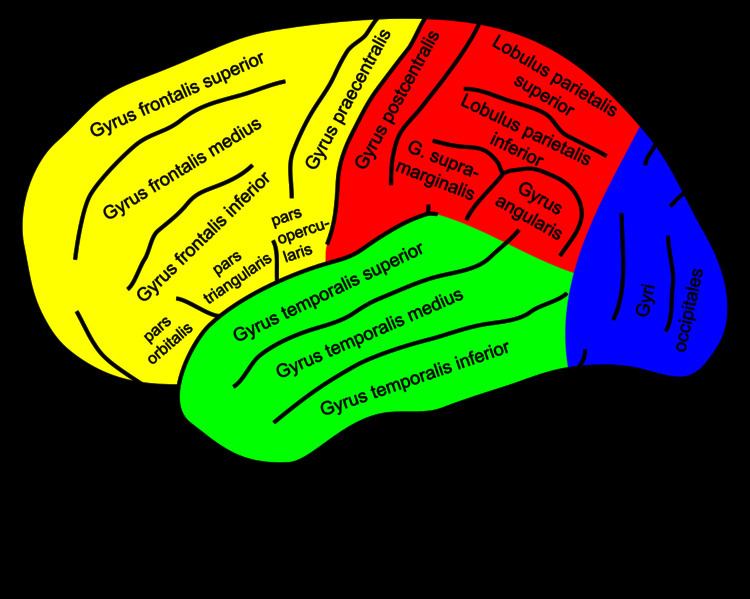Latin Gyrus supramarginalis NeuroLex ID Supramarginal gyrus FMA 61897 | NeuroNames hier-90 TA A14.1.09.131 | |
 | ||
The supramarginal gyrus is a portion of the parietal lobe. This area of the brain is also known as Brodmann area 40 based on the universally used brain map created by Korbinian Brodmann to define the structures in the cerebral cortex. It is probably involved with language perception and processing, and lesions in it may cause receptive aphasia.
Contents
Important functions
The supramarginal gyrus is part of the somatosensory association cortex, which interprets tactile sensory data and is involved in perception of space and limbs location. It is also involved in identifying postures and gestures of other people, and is thus a part of the mirror neuron system.
The right portion of the supramarginal gyrus appears to play a central role in controlling our empathy towards other people. When this structure isn't working properly or when we have to make very quick judgments, our empathy becomes severely limited. Research has shown that disrupting the neurons in the right supramarginal gyrus causes humans to project our emotions on others, inhibiting our ability to be empathetic. In addition, this disruption also causes people to be more egocentric, mainly because they aren't able to perceive the emotions of those around them. Both the left and right supramarginal gyri of healthy, right-handed individuals are shown to be active when making phonological word choices. Individuals who had lesions to the left hemisphere had more difficulty than those with lesions to the right hemisphere, reinforcing the dominance of the left hemisphere in language.
Relationships to surrounding structures
The supramarginal gyrus is located just anterior to the angular gyrus allowing these two structures (which compose the inferior parietal lobule) to form a multimodal complex that receives somatosensory, visual, and auditory inputs from the brain. Although the supramarginal gyrus isn't considered a major portion of the language circuit, it still works with the angular gyrus to attempt to link words with meanings. It is also bound caudally by the lateral sulcus, one of the most prominent structures found in the brain.
